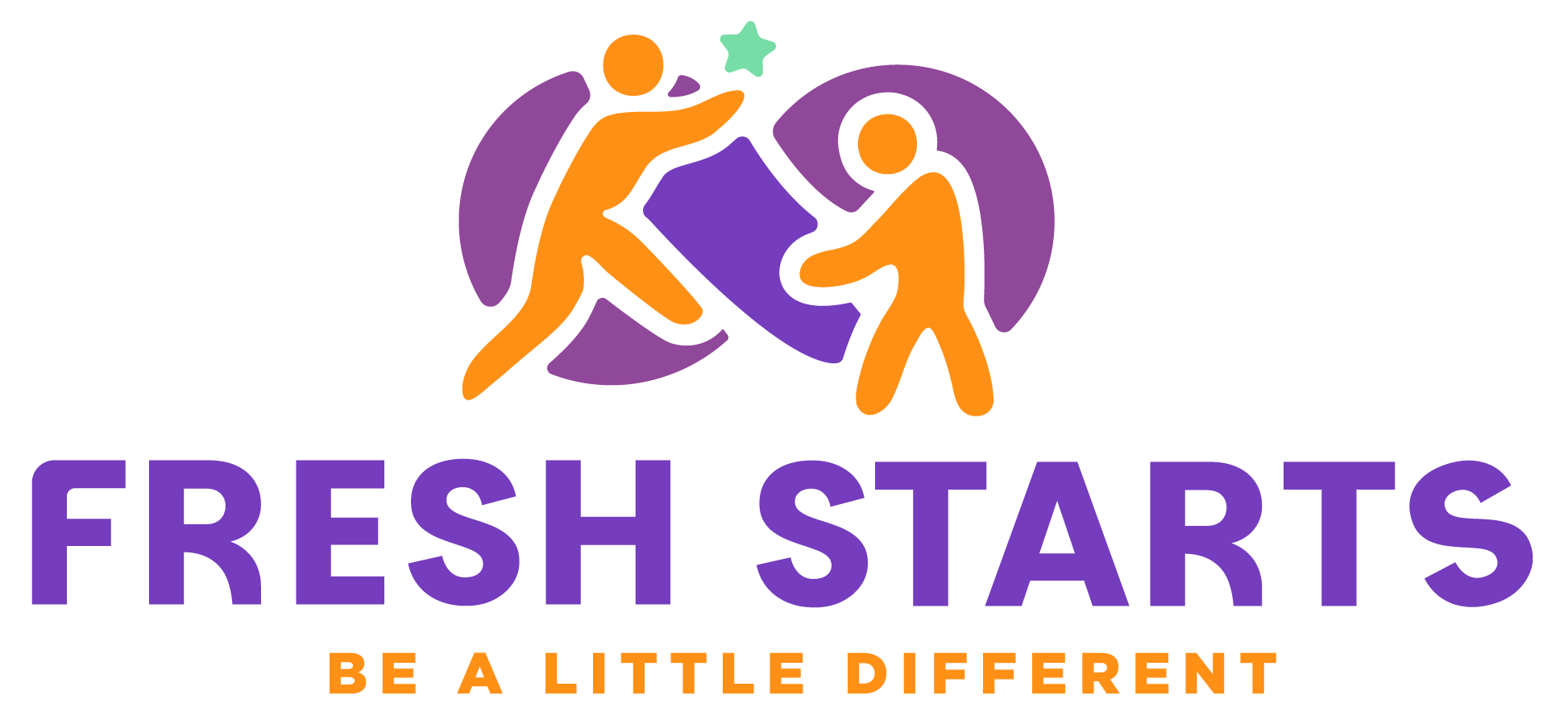About ABA Therapy
Please note this page is for informational purposes and not a guideline for treatment or intervention.
ABA therapy is a widely used approach for designing behavioral interventions for autistic individuals. It focuses on teaching children to communicate and respond naturally, emphasizing learning through curiosity and real-world settings rather than structured classroom exercises. This method considers each child’s cognitive development and any neurological challenges, encouraging engagement, reducing repetitive behaviors, and incorporating breaks, rewards, and play to make therapy enjoyable and effective.
Learn More About ABA Therapy
The Organization For Autism Research offers a comprehensive check-list for helping parents choose a good ABA therapy provider.
Other Useful Resources
ABA therapy methods have been used successfully with many kinds of learners, both with and without disabilities and in many different settings. It is a science that was theorized and developed long before there was any thought of applying it to Autism Spectrum Disorder, and it is used around the world to help people overcome many different kinds of social and behavioral difficulties including: quitting smoking, personality disorders, relationship counseling, obsessive compulsive disorders, ADHD and other common human issues. In addition, several studies are available that support the use of ABA therapy programming with children affected by any number of different disabilities including downs syndrome, cerebral palsy, emotional disorders, and general developmental delay…
Through long term experiment and study, ABA therapy has become a valuable tool for autism intervention and studies supporting ABA therapy intervention are being published in many scientific journals such as “The Journal of Autism and Developmental Disabilities,” “The Journal of Early and Intensive Behavioral Intervention (JEIBI),” and “The Journal of Speech and Language and Applied Behavior Analysis.”
ABA therapy methods are used to support persons with autism in at least six ways:
- to increase behaviors (e.g. reinforcement procedures increase on-task behavior, or social interactions);
- to teach new skills (e.g., systematic instruction and reinforcement procedures teach functional life skills, communication skills, or social skills);
- to maintain behaviors (e.g., teaching self-control and self-monitoring procedures to maintain and generalize job-related social skills);
- to generalize or to transfer behavior from one situation or response to another (e.g., from completing assignments in the resource room to performing as well in the mainstream classroom);
- to restrict or narrow conditions under which interfering behaviors occur (e.g., modifying the learning environment);
- to reduce interfering behaviors (e.g., self-injury or stereotypy).
The science of behavior analysis focuses on principles about how behavior works, and how learning takes place. Overtime, the field of behavior analysis has developed many techniques and principles useful in promoting good behaviors and discouraging maladaptive behaviors, and applied behavior analysis (ABA) is the use of these techniques and principles to address behavior problems and bring about behavioral changes. It is based on the premise that appropriate behavior – including speech, academics and life skills – can be taught using scientific principles.
One of the most important concepts of ABA is reinforcement. ABA is a reinforcement based science that understands that, in life, the things we do that are followed by positive changes in our environment are most often the things we choose to do again. There is nothing in the definition of reinforcement that dictates what reinforcement is or can be. It only dictates when reinforcement should occur and what it does for a behavior. The actual stimulus that serves as reinforcement should not and cannot be determined by the ABA program developer. Instead, reinforcement is always determined by what actually does increase future behavior.1 One type of reinforcement used in ABA is positive reinforcement- when a behavior is followed by something that is valued, therefore promoting the reoccurrence of that behavior. ABA assumes that children are more likely to repeat behaviors or responses that are rewarded (or “reinforced”), and they are less likely to continue behaviors that are not rewarded. Eventually, the reinforcement is reduced so that the child can learn without constant rewards.
Done correctly, ABA intervention for autism is not a “one size fits all” approach consisting of a “canned” set of programs or drills. On the contrary, every aspect of intervention is customized to each learner’s skills, needs, interests, preferences, and family situation. For those reasons, an ABA program for one learner might look somewhat different than a program for another learner. But genuine, comprehensive ABA programs for learners with autism have certain things in common:
- Intervention designed and overseen directly by qualified, well-trained professional behavior analysts
- Detailed assessment of each learner’s skills as well as learner and family preferences to determine initial treatment goals
- Selection of goals that are meaningful for the learner and the family
- Ongoing objective measurement of learner progress
- Frequent review of progress data by the behavior analyst so that goals and procedures can be “fine tuned” as needed
- Instruction on developmentally appropriate goals in skill areas (e.g. communication, social, self-care, play and leisure, motor, and academic skills)
- Skills broken down into small parts or steps that are manageable for the learner, and taught from simple (such as imitating single sounds) to complex (e.g. carrying on conversations)
- An emphasis on skills that will enable learners to be independent and successful in both the short and the long run
- Use of multiple behavior analytic procedures – both adult-directed and learner-initiated – to promote learning in a variety of ways
- Many opportunities – specifically planned and naturally occurring – for each learner to acquire and practice skills every day, in structured and unstructured situations
- Intervention provided consistently for many hours each week
- Abundant positive reinforcement for useful skills and socially appropriate behaviors
- An emphasis on positive social interactions, and on making learning fun!
- No reinforcement for behaviors that are harmful or prevent learning
- Use of techniques to help trained skills carry over to various places, people, and times, and to enable learners to acquire new skills in a variety of settings
- Parent training so family members can teach and support skills during typical family activities
- Regular meetings between family members and program staff to plan, review progress, and make adjustments
Numerous studies have shown the effectiveness of ABA therapy in the treatment of autism. According to the national organization, Autism Speaks:
“Research documents that many ABA techniques are effective for building skills of all kinds in children, adolescents, and adults with autism and related disorders. Additionally, ABA methods are useful for helping individuals and families manage some of the difficult behaviors that may accompany autism, without the side effects of drugs or other treatments. A number of programs have been combining many ABA techniques into comprehensive treatment programs for youths and adults with autism for many years. Many of those individuals have learned to work and live successfully in their communities thanks to ABA treatment. However, so far, there have been no studies of intensive ABA with older individuals with autism comparable to those that have been done with young children.
Hundreds of published studies have shown that specific ABA techniques can help individuals with autism learn specific skills, such as how to communicate, develop relationships, play, care for themselves, learn in school, succeed at work, and participate fully and productively in family and community activities, regardless of their age. A number of peer-reviewed studies have examined the effects of combining multiple ABA techniques into comprehensive, individualized, intensive early intervention programs for children with autism. “Comprehensive” refers to the fact that intervention addresses all kinds of skills: communication, social, self-care, play, motor, pre-academic, and so on. “Early” means that intervention began before the age of four for most children. “Intensive” means that ABA methods were used to arrange large numbers of learning opportunities for each child every day in both structured and unstructured situations, which amounted to 25-40 hours per week during which children actively learned and practiced skills. That was done so that young children with autism would have experiences like typical toddlers, who get thousands of chances every day to learn by interacting with their parents and others. These studies showed that many children with autism who received 1-3 years of this type of treatment had large improvements on tests of their cognitive, communication, and adaptive skills. Some who participated in early intensive ABA for at least 2 years acquired enough skills to participate in regular classrooms with little or no ongoing help. Other children in the studies learned many skills through intensive ABA, but not enough to function independently in regular classrooms full-time. Across studies, a small percentage of children improved relatively little. At this time, it is very difficult to predict in advance how far any individual child might go with this treatment. More research is needed to determine why some children with autism respond more favorably to early intensive ABA than others.
In some studies, intensive ABA was compared with less intensive ABA, typical early intervention or special education, and “eclectic”, mixed-method interventions done both intensively and non-intensively. The children with autism who received intensive ABA treatment made larger improvements in most skill areas than children who participated in the other interventions. Parents whose children received intensive ABA reported less stress than parents whose children received other treatments.”
Additionally, the MADSEC Report (Maine Administrators of Services for Children with Disabilities), a detailed analysis of methodologies with which to educate children with autism concluded that, “…treatment approaches grounded in ABA are now considered to be at the forefront of therapeutic and educational interventions for children with autism.” And, according the CARD (Center for Autism and Related Disorders), “The large amount of scientific evidence supporting ABA treatments for children with autism have led a number of other independent bodies to endorse the effectiveness of ABA, including the U.S. Surgeon General, the New York State Department of Health, the National Academy of Sciences, and the American Academy of Pediatrics.”






